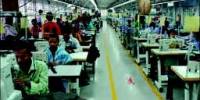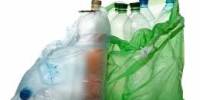3.1: Pharmaceutical Industry Overview
The Pharmaceutical Industry is one of the highly sophisticated industries in Bangladesh, which has been exposed to rapid change and made a revolution in Bangladesh. These industries maintain a high technology and a world class standard in quality. Moreover, these industries have a major commitment to the society than any other industry as it is involved with the manufacturing of life saving drugs.
The pharmaceutical sector in Bangladesh is one of the fastest growing sectors of the economy. The $700 million sector with more than 230 manufacturers is continuously expanding with new products to new international destinations. The export value of pharmaceuticals is small but growing at 50 percent per year. Exports increased from $8.2 million in 2004 to $28.3 million in 2007, while export destinations climbed from 37 countries to 72 during the period.
The industry’s inception dates back to the 1950s when a few multinationals and local entrepreneurs started with manufacturing facilities in the former East Pakistan. By 1982, many top ranking multinationals established their manufacturing facilities in this part of the world. Prominent among them were Novartis (Ciba-Geigy), Pfizer, Glaxo, Fisons, Squibb, Hoechst, ICI, May & Baker and Organon.
Pharmaceutical industries in Bangladesh are gifted with unparalleled potential to grow in the days ahead as they enjoy a number of competitive advantages. The industry’s ability to comply with guidelines of quality assurance has put it on a solid base. Almost all companies are equipped with World Health Organization (WHO) Good Manufacturing Practice (GMP) standards.
Bangladesh’s ability to face competition from developing countries like India, China, Brazil and Turkey in its export markets is due to Bangladesh pharmaceutical’s strict quality compliance. The most important indicator is the capability of the industry to achieve excellence and go beyond general international standards.
Bangladeshi pharmaceutical industries are expanding exportable items quite fast. Bangladesh is now exporting wide range of pharmaceutical products covering all major therapeutic classes and dosage forms like tablets, capsules and syrups. Bangladesh is also exporting high-tech specialized products like, HFA, inhalers, suppositories, hormones, steroids, oncology, immunosuppressant products, nasal sprays, injectibles and IV infusions.
The sector enjoys sound footing due to the local pull of heavy demand for medicines by the country’s 150 million people. The industries are now producing quality medicines at an affordable price for millions of people in Bangladesh and has made Bangladesh almost self reliant in pharmaceutical products. Now, 97 percent of local demand for medicines is met by the sector.
The industry welcomed over 50 new factories in the last three years, of which about two dozen started marketing with an aggressive sales and promotion strategy during 2008. Out of 230 companies, 200 have their own manufacturing facilities of which five are multinationals.
The sector is active in API (Active Pharmaceutical Ingredients). Twenty-one different companies now locally manufacture 41 API’s. However, compared to huge local demand, more API industries need to be set up. Pharmaceutical industries’ potential has multiplied with the recently approved API industrial park in Munshigonj at a cost of $30 billion. The APIPark will inject fresh momentum into the pharmaceutical industry. The country can save at least 70 percent of the amount and the park is expected to transform the industry as a major export earner with the potential to export products worth $750 million per year within the next five years.
Bangladesh can continue with the patented products up to 2015 as per trade related intellectual property rights (TRIPS). Pharmaceutical industries are now legally allowed to reverse engineer, manufacture and sell generic versions of on-patent pharmaceutical products for domestic consumption as well as for export to other LDCs. This has created a big opportunity to make Bangladesh as a new chemical entity.
It is estimated that over $250 million have been invested in this sector over the last couple years in terms of facility modernization as well as new facilities. Needless to mention that all of these investments were directed towards developing full cGMP compliant facilities, which can meet stringent regulatory requirement of any country of the world.
This has opened up wider range of opportunities for the industry whereby these Bangladeshi companies can now export pharmaceutical products to any part of the globe capitalizing on the $600 billion plus global pharmaceutical market.
3.2: a study on Pharmaceutical Industry
Major Divisions:
The total industry can broadly be classified into two categories. These are
- Patent Medicines
- Generic Medicines
Patent medicines are the products that are invented by the company, who have their own research team working on their own laboratories. These products are patented for many years to enjoy the monopoly market. After years of business the formulation is sold in the market so that others can go into mass production.
Generic medicines are the products that are produced in mass scale. These are marketed by several companies under different brand name, where the formulation of this product is almost same. Prices of the products are under this category are competitive. Bangladesh mainly concentrates on this category, as labor cost is one of the lowest in the world.
Growth of the Industry:
The growth potential of pharmaceutical industry is enormous. As urban population is increasing and people are getting educated, they are now more concerned about healthcare. So the demands of medical products are rising. In Bangladesh unhygienic conditions and poor health maintenance plans provide vast scope for the pharmaceutical firms to sell their products. On the other hand, the constant natural disasters provide opportunities to pharmaceutical companies to boost its sales. The trend and growth of this industry tends to be positive as the demand of medicines is rising.
The sales of pharmaceutical products have been growing significantly every year. During the year 2004 the pharmaceutical sales was Tk. 28,741,616,403 which has increased in the following year by remarkable margin. The total sales of pharmaceutical industry were Tk. 47,016,389,492 in 2008.
The local pharmaceutical companies acquire major portion of the sales revenue. There are some multinational giants like GlaxoSmithKline, Novartis, Sanofi-Aventis operating their business in Bangladesh, but due to narrow product line and high price there sales have not reached to the competitive level.
Export Potentials:
Bangladesh has a great prospect in the global pharmaceutical market as a significant portion of the pharmaceutical products are exported every year. According to some industry people, Bangladesh is a country among 50 least developed countries that is self sufficient in pharmaceuticals. Over 200 small, medium and large local and multinational companies meet around 97 percent of the Tk 5,000 crore domestic market demands.
Some of these companies exported medicines worth nearly Tk 300 crore in 2008, which were Tk. 200 crore and Tk. 150 crore in 2007 and 2006 respectively. The country now exports a wide range of pharmaceutical products covering all major therapeutic classes and dosage forms. High-tech specialized products like inhalers, suppositories, nasal sprays, indictable and infusions are also in the export basket.
Novartis, Beximco, Square Pharmaceuticals, Aventis, Eskayef, Popular Pharmaceuticals, ACI and Acme are some of the leading exporters. Swiss multinational Novartis (Bangladesh) that exported drugs and medicines worth $ 15 million was the top exporter in 2007. However, export earning of the company was less $ 6.43 million less that that of the previous year. Novartis (Bangladesh) Limited was also awarded with the National Export Trophy – Gold for the years 2002-2003 and 2003-2004.
Bangladesh now exports a wide range of pharmaceutical products to over 60 countries, including some developed markets.
Industry Players:
In the emerging pharmaceutical industry of Bangladesh, many local and multinational companies are operating their business. There are around 268 pharmaceutical companies working in Bangladesh among which 230 manufacturing pharmaceutical companies are producing quality medicine. Following is the list of top ranked pharmaceutical companies:
| º SQUARE | º SANOFI AVENTIS |
| º INCEPTA PHARMA | º GLAXOSMITHKLINE |
| º BEXIMCO | º ORION LAB. |
| º ACME | º GENERAL |
| º ESKAYEF | º SANDOZ |
| º A.C.I. | º HEALTHCARE PHARMA |
| º OPSONIN PHARMA | º IBNSINA |
| º RENATA | º NUVISTA PHARMA |
| º ARISTOPHARMA | º NOVO NORDISK |
| º DRUG INTERNATIONAL | º NOVARTIS |
Retail pharmaceutical sales are expected to reach Tk 6,000 crore this year, riding on people’s health consciousness and booming hospitals and clinics. Annual turnover from retail drugs sales was Tk 4,701.63 crore in 2008, nearly 7 percent rise over the figure a year earlier, according to IMS (Information on Medical Statistics) data. The market size was Tk 4,075 crore in 2007.
Some 250 small, medium and large local and multinational companies are in operation in Bangladesh. Many started their business after 2000 sensing the growth potential in the local market. Of the 250 companies, top 10 companies — Square, Beximco, Eskayef, Incepta, Acme, ACI, Opsonin, Renata, Aristopharma and Drug International take up nearly 70 percent of the total market share, according to the IMS 2008 survey.
The survey reveals that Square Pharmaceuticals, the flagship company of business conglomerate Square Group, holds the leading position in the local market with Tk 943 crore sales in 2008. The company alone holds a fifth of the total market share. Incepta, the second, sold drugs worth Tk 354 crore in the local market last year. Beximco, Acme and Eskayef are the third, fourth and fifth respectively, with Tk 333 crore, Tk 247 crore and Tk 218 crore in sales turnover.
The total sales volume of the pharmaceutical companies in the year 2008 was Tk. 47,016,389,492. Square pharmaceuticals alone held 20.06% of the sales revenue. Incepta and Beximco held the 2nd and 3rd position with 7.53% and 7.09% revenue share respectively. The top 10 companies acquire around 65% sales share of the industry. The other companies (more than 250) acquire the rest 34.82% revenue share.
Top Selling Brands:
More than 250 pharmaceutical companies are selling around 9000 brands in Bangladesh. Square acquires the largest assortment of pharmaceutical products. The top selling brands in 2008 are SECLO, NEOTACK, CIPROCIN, CEF-3, LEBAC ENTACYD PLUS by Square; NEOCEPTIN R by Beximco; LOSECTIL by Eskayef, PANTONIX by Incepta Pharma, RANITID by Opsonin,
| Brand | Company | Sales (Lac Tk.) |
| SECLO | Square | 6791.15 |
| NEOTACK | Square | 4833.75 |
| NEOCEPTIN R | Beximco | 4660.85 |
| CIPROCIN | Square | 4471.82 |
| LOSECTIL | Eskayef | 4038.86 |
| NAPA | Beximco | 3539.89 |
| PANTONIX | Incepta Pharma | 3483.56 |
| CEF-3 | Square | 3377.05 |
| LEBAC | Square | 2919.75 |
| RANITID | Opsonin Pharma | 2804.33 |
| FIMOXYL | Sanofi Aventis | 2799.81 |
| ENTACYD PLUS | Square | 2575.26 |
| XELDRIN | A. C. I. | 2496.85 |
| CEFTRON | Square | 2437.49 |
| ZIMAX | Square | 2397.16 |
| FLUCLOX | A. C. I. | 2091.36 |
| MOXACIL | Square | 2030.53 |
| ALATROL | Square | 1955.60 |
| RANIDIN | ACME | 1902.03 |
| VOLTALIN | Novartis | 1878.65 |
Square’s brand SECLO is the top selling brand of 2008 with a sales revenue of Tk. 679,114,960. NEOTACK of the same company and Beximco’s NEOCEPTIN R ranked just after Seclo with sales revenue of Tk. 483,374,773 and Tk. 466,085,371 respectively.
Most of the top brands are general medicines and are used massively by the people. So the sales for those brands are high.
Competitive Scenario:
The Pharmaceutical industry is mostly dominated by the local companies. The Top 10 selling companies are Bangladeshi, so competition mostly occurs among these companies. Square Pharmaceutical has a significant control and share of the market. Incepta Pharma, Beximco, ACME, Eskayef are some of the competing pharmaceutical companies. The following table provides a brief competitive summary of the pharma companies in Bangladesh in 2008.
Competitive Aspects of Pharmaeutical Companies (2008)
Position | Company | Sales (Million Tk.) | Share | Growth |
1st | Square | 9430.60 | 20.06 | 12.71 |
2nd | Incepta pharma | 3542.28 | 7.53 | 12.10 |
3rd | Beximco | 3333.93 | 7.09 | -11.08 |
4th | Acme | 2469.31 | 5.25 | 0.62 |
5th | Eskayef | 2179.42 | 4.64 | 4.73 |
6th | A.C.I. | 2126.49 | 4.52 | 23.58 |
7th | Opsonin pharma | 2020.43 | 4.30 | 26.09 |
8th | Renata | 1986.00 | 4.22 | 26.60 |
9th | Aristopharma | 1965.17 | 4.18 | 9.68 |
10th | Drug international | 1592.25 | 3.39 | -8.57 |
Multinational Pharmaceuticals:
Few of the world’s leading multinational companies are working in Bangladesh for a long time. But due to high value of product, diminutive product line and strong local competition, they could not climb to the leading positions in Bangladesh. The world’s pharmaceutical giant GlaxoSmithKline (UK), Sanofi aventis (Spain), Novartis (Switzerland) , Eli Lilly operating their business here. The following table shows a comparative view of the performance of top multinational companies for patented and branded products:
Company | Sales (Million Tk.) | Share | Growth | Industry Position |
| GlaxoSmithKline | 1010.24 | 30.07 | 0.98 | 12 |
| Sanofi Aventis | 680.10 | 20.25 | -9.44 | 11 |
| Novo Nordisk | 602.86 | 17.95 | 61.74 | 19 |
| Novartis | 500.82 | 14.91 | 9.07 | 20 |
| Roche | 284.25 | 8.46 | -7.43 | 32 |
Strengths:
A few strengths of Novartis (Bangladesh) Limited has been given below-
- High Quality products: Novartis provides high quality products. And the quality of medicine that we get here from Novartis is identical with any other countries all over the world. So Novartis ensures quality product.
- Innovative and unique product lines: As it has been said earlier that Novartis Pharma is specialized in patent products, so the products invented here is innovative and unique. And most of these products cannot be found by manufactured from other companies.
- Highly skilled management: As I have worked with the management and other employees of Novartis for three months, it can be ensured by me that Novartis is well known for recruiting highly skilled management, whom are responsible for the success of this company.
- Quality raw materials imported from foreign sources: Most of the raw materials that are used for making medicines are imported from abroad. That’s why the quality of the raw materials are ensured.
- High quality customer service: Novartis has a separate division of customer care service. This team always updates the current conditions of the customers and tries to provide them maximum service based on their medicines.
- Sole manufacturing plant with GMP standard & European Certification:
As it has been said earlier that, Novartis has a plant in tongi. And this plant has been built under the observation of experts to ensure that it falls under the GMP standard and European certification.
Other than these characteristics, Novartis is also-
- Leading pharmaceutical exporter of the country
- Effective marketing strategies
- It is a large multinational company globally
- A proven track record in defect-free manufacture
- Highly Efficient employees
- Effective State-of-the-art plant and equipments
- Available Cash on hand
- Global Company reputation
- A positive work climate and organization culture
- Novartis is the number 1 ethical pharmaceutical company worldwide.
- Novartis is in 4th position among all the industries globally.
- Serving additional customer group in the existing geographical market.
- Expanding into new geographic markets.
- Scope to improve in export oriented products.
- Expanding the company’s product line to meet a broader range of customer needs
- Transferring sector’s skill or technological know-how to a new business or a new product.
- Scope to communicate the global reputation of Novartis
Problems:
Although being a multi national company, Novartis has some drawbacks such as-
- Very expensive Raw Materials: Most of the raw materials Novartis uses to produce medicine are imported from abroad. And due to that the cost to purchase raw material gets very high, and ultimately the impact falls on the price of the product.
- High price of products: As the cost of raw material is high, naturally the products price also gets higher. And due to higher price, consumers do not want to the medicines of Novartis.
- Lack of proper awareness in the market: Awareness is a significant issue for any product to run well in the market. There is no doubt that the products of Novartis are quality full, but still Square and Beximco has a significant place on the mind of the customers. For this reason people find the products of Square and Beximco familiar rather than Novartis.
- Narrow product lines than the competitors: Another problem of Novartis is, its product line is narrow than other companies. As it has been said earlier that, in Pharma division only patent products are made, which’s price is higher, and at the same time variety is less. So other company gets the advantage.
- Lack of manpower: For any company, workers are the ultimate source of power. And in this field also, other companies have the advantage. Basically, the term manpower refers to the field forces who works with the product and directly keeps contact with the customers and doctors. The number of field force in Novartis is less than other companies, so it faces number of problems.
- Strong local competition: It has been said earlier that the local competition is very strong in market. And whenever the market is tight, all the companies has to work very carefully so that no loopholes are left over. An analysis on the competitors of Novartis is given in chapter 3.
Recommendations:
- Substitute source of Raw materials: Whenever a company can find a source to get raw materials at lower price, it’s possible to provide products at lower price. So Novartis has to find a source which can ensure lower cost and good quality at the same time to overcome costly raw materials problem.
- Proper Promotional Activities: In today’s world it’s very difficult for any company to capture the market without proper promotions. If we notice we will see that, Square and Beximco is much familiar in the media than Novartis. Although, Pharma products cannot be promoted directly to the customers, but still Novartis can use effective marketing tools to capture the media.
- Versatile Products: To do such thing, extensive level of research is needed. But although it cannot be denied that if Novartis can broader the product line, it will play much better in the competition.
- Proper Trained Field force: It has been observed that, medical information officer is such a job, where most of the workers lose interest to work in. And the scenario is common in all pharmas. So if Novartis can take such measures through which it will be possible to recruit not only more workers, but also reduce the turn over rate, so Novartis will enjoy the ultimate advantage.
CONCLUSION:
The findings that I have analyzed on weakness part were basically high price of raw materials, high price of products, comparatively weak marketing channel etc. If Novartis (Bangladesh) Limited can overcome these issues, future prospects will be higher.
In conclusion it can be said that, definitely Novartis (Bangladesh) Limited is one of the best pharmaceuticals all over the world, just a blend of reasonable price and quality product will take it to the extremes.
















